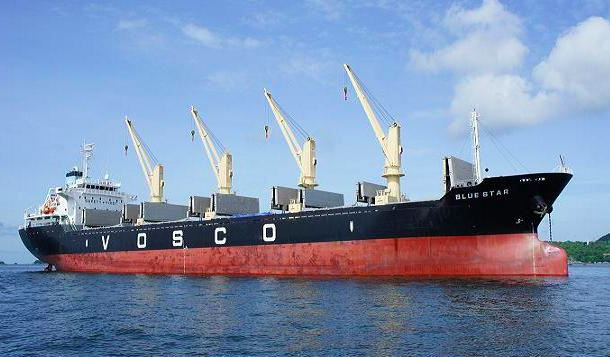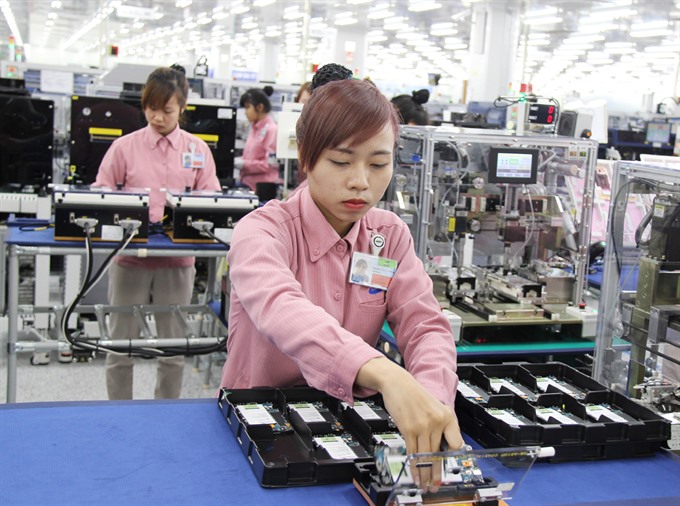 Economy
Economy

The Việt Nam – Eurasian Economic Union free trade agreement, which took effect last month, offers Vietnamese firms the opportunity to boost exports of garments and textiles, footwear, wooden products, seafood, and farm produce to Russia, a conference heard in HCM City yesterday.
 |
| Cellphones being assembled at Samsung’s high-tech complex in northern Thái Nguyên Province for export to a number of markets, including Russia. Việt Nam has a large opportunity to boost exports to Russia with the trade deal which took effect last month. – VNA/VNS Photo Hoàng Nguyên Cellphones being assembled at Samsung’s high-tech complex in northern Thái Nguyên Province for export to a number of markets, including Russia. Việt Nam has a large opportunity to boost exports to Russia with the trade deal which took effect last month. – VNA/VNS Photo Hoàng Nguyên |
HCM CITY — The Việt Nam – Eurasian Economic Union free trade agreement, which took effect last month, offers Vietnamese firms the opportunity to boost exports of garments and textiles, footwear, wooden products, seafood, and farm produce to Russia, a conference heard in HCM City yesterday.
Trần Việt Phương of the Ministry of Industry and Trade’s European Market Department said trade with Russia increased strongly last year to nearly US$4 billion and is expected to top $10 billion by 2020.
Russia is the largest and most promising market of the five EAEU countries – the other members being Belarus, Kazakhstan, Armenia, and Kyrgyzstan -- accounting for 80 per cent of the bloc’s total trade, he said.
Việt Nam is currently Russia’s largest trading partner in Southeast Asia, but the numbers remain modest compared to the potential, accounting for around 1 per cent of their respective trade, he said.
Under the trade deal, nearly 90 per cent of tariff lines have been cut or reduced, with 60 per cent being removed soon after it took effect, offering Việt Nam a massive advantage in competing with other countries in exporting to this region, including Russia, he said.
Trần Đức Hạnh, a market research expert, said with a population of 142.4 million, Russia has large demand for consumer products, many of which are Việt Nam’s strengths.
Vietnamese and Russian exports do not compete with each other but are complementary, she told the conference held by the HCM City Institute for Development Studies’ WTO Centre and the Investment and Trade Promotion Centre of HCM City.
Phương and Hạnh agreed that Vietnamese exports of seafood, farm produce, garment and textile, footwear and wooden products to Russia would increase sharply soon thanks to the lower tariffs.
But the bloc has a safeguard measure to prevent a surge in exports of rice, wooden products, footwear and garment and textiles, and Vietnamese exporters must pay attention to this, Phương said, adding that his agency would inform businesses as soon as it gets a warning from the Russian side that the limit has been reached.
There is no import duty on many Việt Nam’s garment and textile products up to 1.5 times the average volume of the last three years. If this is exceeded, the EAEU would conduct an investigation to decide whether to apply MFN (Most Favoured Nation) tariffs, he said.
Hạnh said the potential notwithstanding, firms are encountering difficulties in exporting to the bloc, including high transportation costs, payment issues and the language barrier.
Phương said Vietnamese businesses should peruse the agreement to capitalise on export opportunities.
They should do market research and improve their product quality to meet the market’s needs, he said.
Bùi Kim Thùy of the ministry’s Import-Export Department spoke about the rules of origin for various kinds of products under the trade deal, saying Vietnamese firms must meet them to enjoy the tariff incentives.
Business executives urged Governments on both sides to soon develop bilateral payment methods to facilitate trade. — VNS